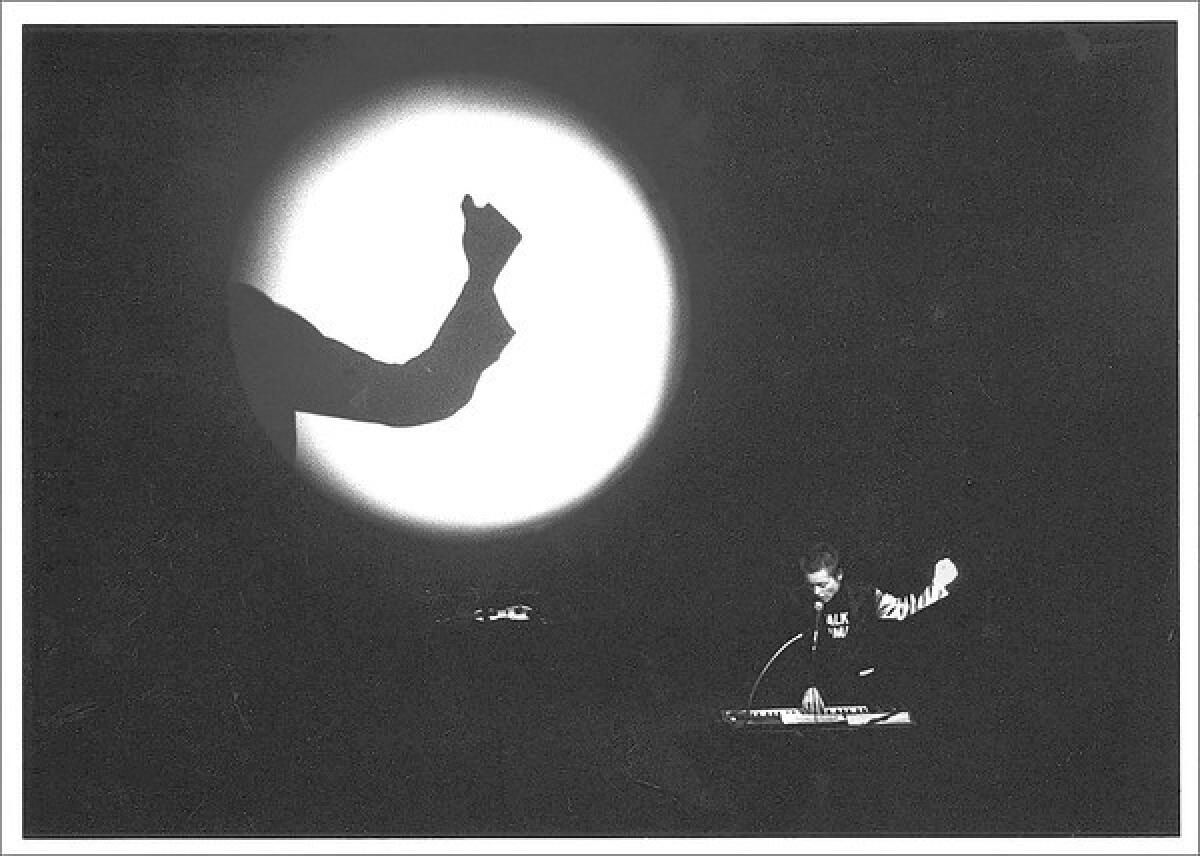Getty presents what the Kitchen has cooked

- Share via
The Getty Research Institute is absorbing yet another chunk of New York City’s experimental-arts patrimony, having recently bought a huge archive of video art, video and audio recordings of live performances, photographs, original posters and other materials documenting the first three decades of work created at the Kitchen, a space in lower Manhattan that since 1971 has tried with frequent success to foster creative breakthroughs in visual art, performance art, and contemporary music and dance.
The archive documents the work done at the Kitchen by luminaries such as Laurie Anderson, Eric Bogosian, John Cage, Merce Cunningham, Philip Glass, Robert Mapplethorpe, Meredith Monk, Nam June Paik, Cindy Sherman, Bill Viola, Robert Wilson and John Zorn, among many others.
The Kitchen’s diversity can readily be seen in its programming ledger, said Glenn Phillips, the Getty curator who’s overseen the purchase. On May 5, 1972, it presented the New York Dolls, legendary for their influence on glam rock, punk rock and the deployment of androgyny as a pop gesture. The following evening the Kitchen offered computer-generated works by artists who’d been using equipment from Bell Laboratories.
PHOTOS: Best art moments of 2013 | Christopher Knight
Re-housing the history of a relatively low-budget Manhattan arts cradle at the palatial Getty Center has its paradoxical side, acknowledged Phillips and Tim Griffin, the Kitchen’s director.
“I don’t think Mr. Getty would have set foot inside the Kitchen,” Phillips said of the oil tycoon who died in 1976, leaving a bequest that turned the J. Paul Getty Trust into the world’s richest visual art institution. Getty’s own taste in art ran to Greek and Roman antiquities, Old Master paintings and French decorative arts from the 1600s and 1700s. “In a way the [Kitchen] artists are having the last laugh here.”
The material will now reside alongside strong complementary holdings such as an archive of the New York City-centric Fluxus movement that unfolded in the decade or so before the Kitchen opened and the extensive archive on Mapplethorpe the Getty acquired in 2011.
In building its holdings documenting experimental art since the 1950s, Phillips said, the Getty is preserving for posterity creations that tend to be physically vulnerable or ephemeral by nature, and that are generally in less demand by the collectors museums typically rely on to provide them as loans or gifts.
Griffin acknowledged that some New Yorkers may complain about the Kitchen’s archive going to L.A. “The thing I can say … is that we are a place committed to the artist, and the artists are really well served by this.... Their materials will be preserved and infinitely more accessible than we or probably any other institution could have done. As an archive junkie, seeing them leave our home is not easy, but it’s definitely the best thing.”
More to Read
The biggest entertainment stories
Get our big stories about Hollywood, film, television, music, arts, culture and more right in your inbox as soon as they publish.
You may occasionally receive promotional content from the Los Angeles Times.











